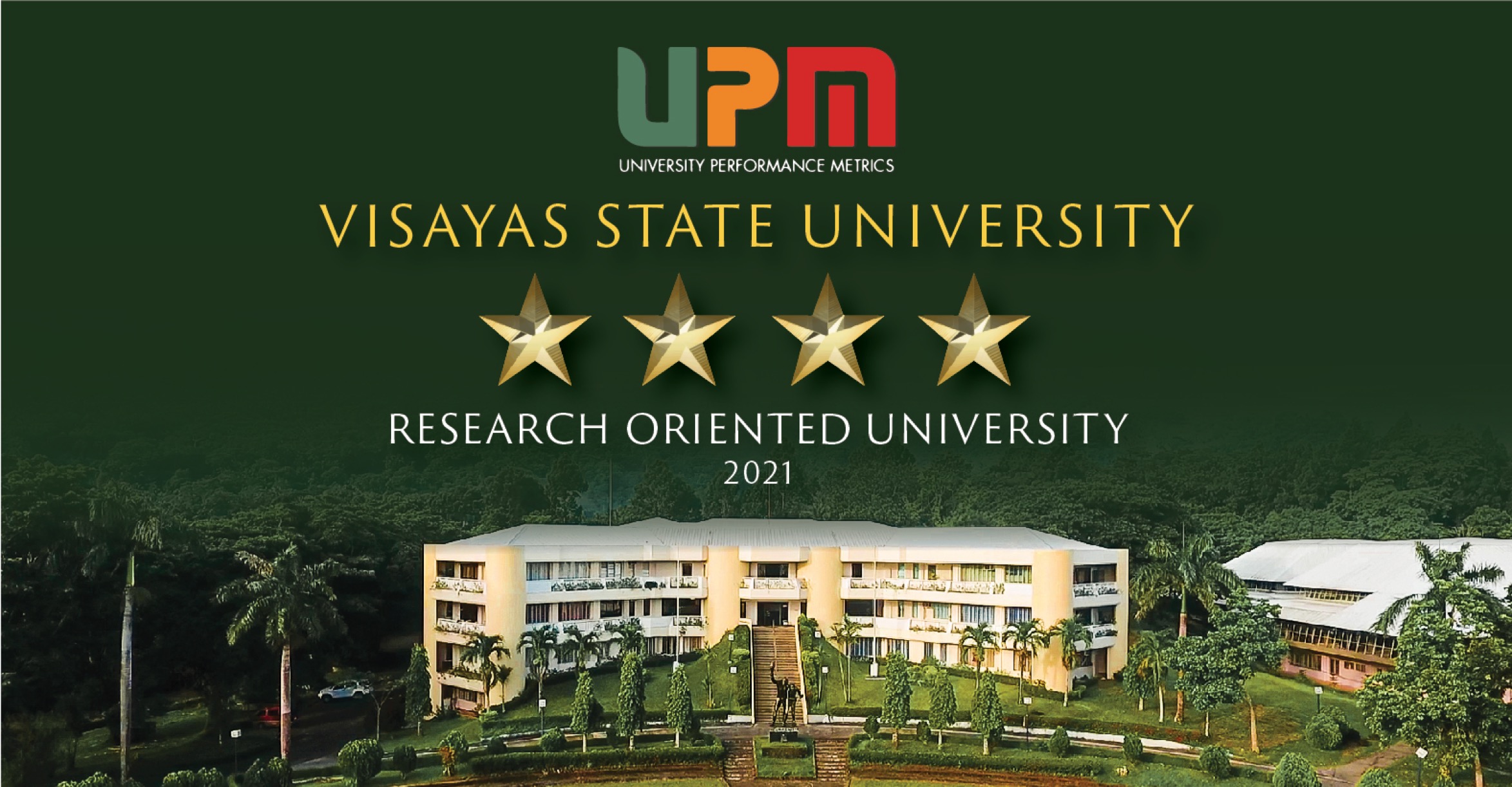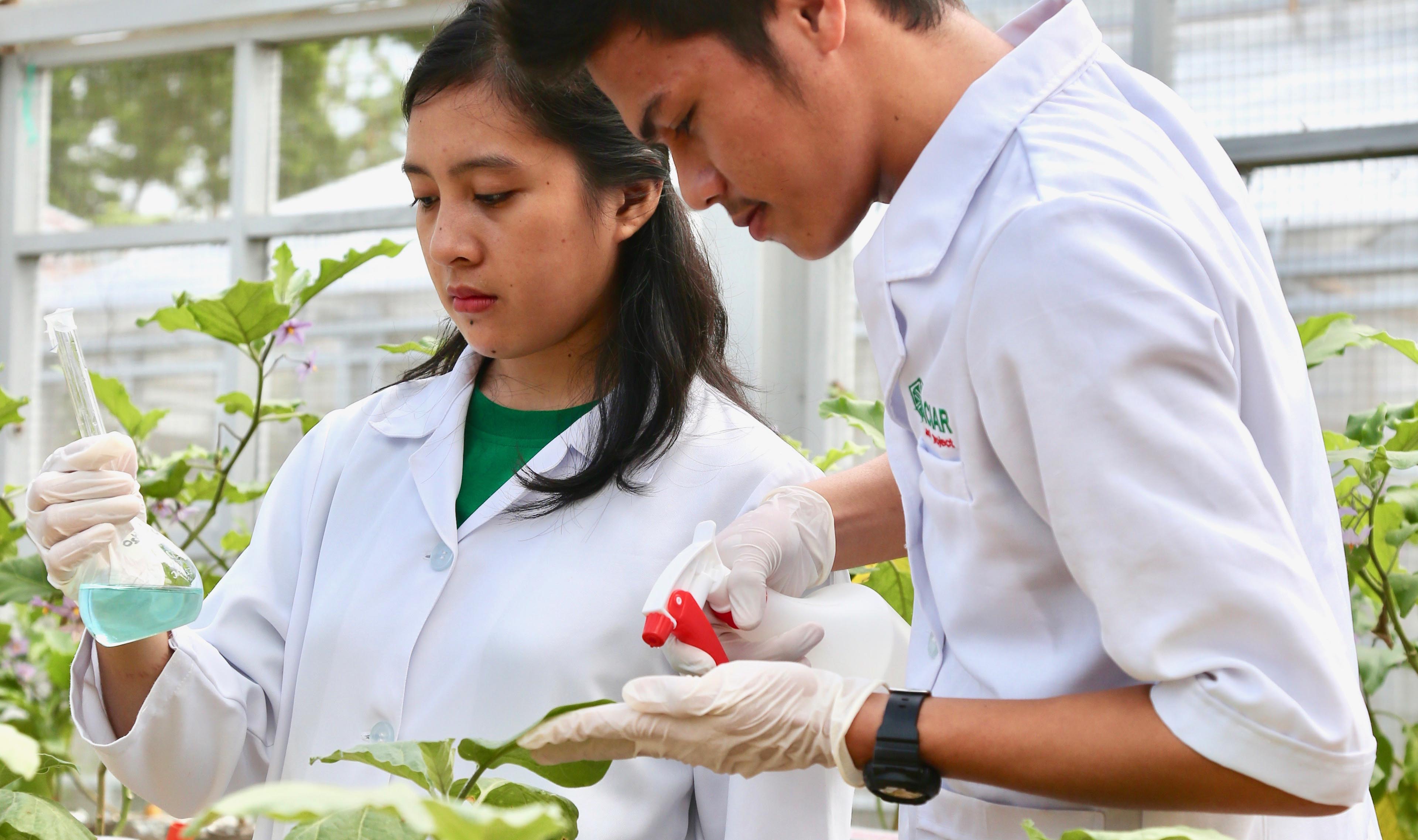Major Diseases of Queen Pineapple

Figure 1. A) Queen pineapple with Heart rot disease and B) Phytophthora cinnamomi under a microscope (100x)
A. Heart rot and root rot
• Causal Organism: Phytophthora cinnamomi
• Symptoms: soft rotting of the basal white tissues of the youngest leaves at the heart of the apical meristem; necrosis (Green and Nelson, 2015; Ceniza et al, 2018)
• Economic Importance: most destructive soil-borne pathogen with 20-30% prevalence (Shen et al., 2013)
• Distribution: As surveyed, it was observed in Ormoc City, Leyte and Silago, Southern Leyte
a. Management Options: Integration of regulatory, cultural, chemical, and biological practices (Green and Nelson, 2015); Use of antagonists Trichoderma and Penicillium sp. (Oclarit, 2018)

Figure 2. A) Queen pineapple leaves with anthracnose disease, B) Colletotrichum gloeosporioides under microscope (100x)
B. Anthracnose
• Causal Organism: Colletotrichum gloeosporioides
• Symptoms: dark, water-soaked lesions on leaves (Kumar, 2014; Ceniza et al, 2018)
• Economic importance: wide host range: coconut, mango, banana, avocado, papaya, etc. (Nelson 2008)
• Distribution: As surveyed, it was observed in Baybay City, Javier, Leyte, and Silago, Southern Leyte
a. Management Options: Carry out regular weeding and timely pruning of the infected plant parts; Plant resistant varieties (Waller, 1992); use of wood vinegar (Torres, 2018); use of plant extracts (Payot, 2018)
 Figure 3. A) Queen pineapple leaves with leaf blotch, B) Pestalotia sp. under a microscope (100x)
Figure 3. A) Queen pineapple leaves with leaf blotch, B) Pestalotia sp. under a microscope (100x)
C. Leaf Blotch
• Causal Organism: Pestalotia
• Symptoms: chlorotic, water-soaked flecksthat enlarge to become dry, yellow, then red-brown, blocky to oval lesions (IPCM, 2013; Alegre et al, 2018)
• Economic Importance: Affects photosynthesis of the plant (Alegre et al, 2018)
• Distribution: It was observed pineapple fields in the Municipality of Basud and San Vicente, Camarines Norte (Alegre et al, 2018)
a. Management Options: Crop rotation, proper crop debris management, and fungicide treatments (IPCM, 2013)

Figure 4. A) Queen Pineapple with blight disease; B) Fusarium sp. under microscope (400x)
D. QP Blight
• Causal Organism: Fusarium
• Symptoms: Drying of leaves, noticeable loss of vigor and severe injury to the vascular level (Alegre et al, 2018)
• Economic Importance: Death of plants (Alegre et al, 2018)
• Distribution: It was observed in San Lorenzo Ruiz, San Vicente, Basud, Bibirao and Calasgasan, Camarines Norte (Alegre et al, 2018)
a. Management Options: Crop rotation, proper crop debris management, and fungicide treatments (IPCM, 2013)
 Figure 5. A) Queen pineapple with leaf spot; B) Curvularia sp. under a microscope (100x)
Figure 5. A) Queen pineapple with leaf spot; B) Curvularia sp. under a microscope (100x)
E. QP Leaf Spot
• Causal Organism: Curvularia
• Symptoms: Yellow, brown lesions which eventually turns dark on QP leaves (Alegre et al, 2018)
• Economic Importance: Affects photosynthesis of the plant if severe could result to death of plant (Alegre et al, 2018)
• Distribution: It was observed in San Lorenzo Ruiz, San Vicente, Basud, Bibirao and Calasgasan, Camarines Norte (Alegre et al, 2018)
a. Management Options: Crop rotation, proper crop debris management, and fungicide treatments (IPCM, 2013)









